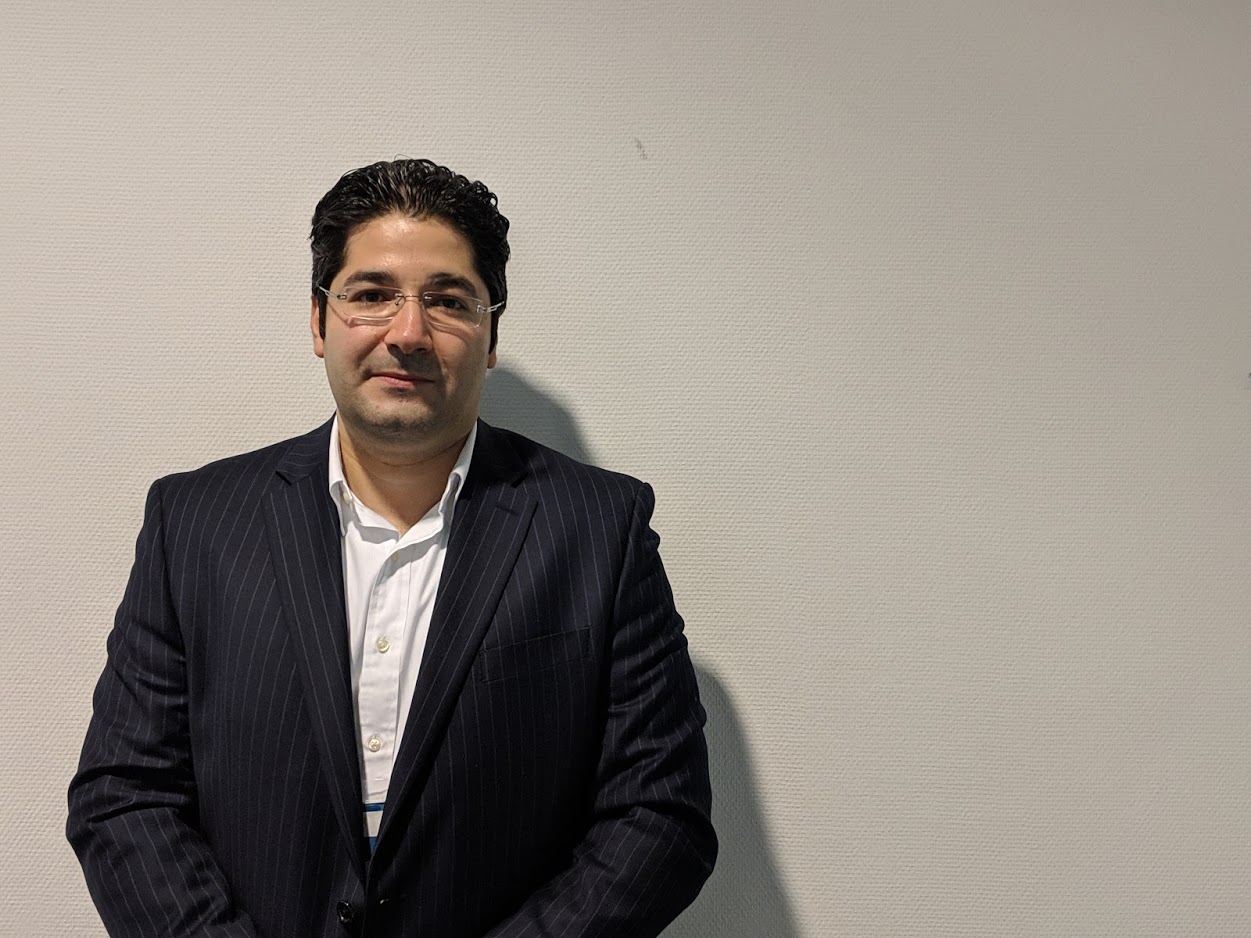![Dr. Mohsen Seifi, Director of Global Additive Manufacturing Programs, ASTM International [Photo: Fabbaloo]](https://fabbaloo.com/wp-content/uploads/2020/05/IMG_20181113_175320_img_5eb0a1fa21c23.jpg)
I recently sat down with ASTM International’s Mohsen Seifi, PhD, Director of Global Additive Manufacturing Programs.
A busy formnext brought together thousands of participants in the global 3D printing industry as Frankfurt again hosted the large trade show. Stealing a quiet moment of time for a conversation on standards development provided for a deeper context to the halls’ hundreds of exhibiting booths showcasing the latest in hardware, software, materials, and strategic approaches.
ASTM is committed to standards development across a wide range of industries worldwide, and is seeing significantly growing demand for standardization work in additive manufacturing.
“For standards development, we are continually bringing new standards and establishing new initiatives such as opening a new Center of Excellence as a result of partnership with world class organizations actively involved in development of additive manufacturing technologies. The center has about eight locations with around 100 people involved worldwide. There are significant capabilities for research and development to directly close standardization gaps for AM technologies,” Dr. Seifi noted.
“Qualification and certification is one of the major barriers that currently exist for adoption of additive manufacturing technologies. We need to have standards across the value chain, from feedstock control to process, post-process and inspection. We need to work collectively to develop standards that benefit everyone globally.”
Over 120 years, he continued, ASTM has developed more than 12,500 standards — and this significant groundwork has contributed to notable knowledge across the organization. Among this is an acknowledgement: “We know the process is not fast due to the consensus-based nature of standard development. It takes time to bring agreement on a standard across the community particularly when you have international organizations involved.”
In a fast-moving industry like 3D printing, though, where notable achievements are being made in an array of verticals and technologies at an accelerated pace, the traditionally slow-moving approvals process isn’t ideal.
“As a leading standards development organization, we wanted to come up with an innovative solution to reduce the amount of time needed to develop standards,” Dr. Seifi continued. “With the Center of Excellence, we are working to bridge the gap between the R&D and innovation communities; this benefits faster creation of standards.”
ASTM is working with an elite international R&D team to prioritize the research that needs to be conducted to directly close standardization gaps, he explained. That prioritization helps to develop a strategy to collaboratively work toward a streamlined journey of progress.
“We think additive manufacturing standardization is really an international activity; it requires involvement of experts across the globe. You can see here, at formnext, there is trading with everyone — and you have to have standards accepted globally and that is a challenge,” Dr. Seifi said.
A key part of that international journey is ASTM’s agreement with the ISO, a partnership in standards development dating back to 2011 when ISO established its technical committee on additive manufacturing. Work on standardization traces back years longer, as in 2009, ASTM F42 on Additive Manufacturing Technologies formed to set industry standards.
Collaboratively creating unified standards that do not contradict with one another from country to country is a critical component of a global industry. Duplicative and conflicting standards are not going to help the industry to excel.
“Adopting a spirit of inclusion and cooperation vis-à-vis other standardizing bodies can only increase the market relevance of our standards, while ensuring an effective and efficient use of resources,” said ISO Secretary-General Rob Steele seven years ago when the effort was announced.
Now, with the new Center of Excellence (CoE), the hope is to increase efficiency and accelerate the pace of standards development, Dr. Seifi noted.
Currently, about 23 standards have been published, and more than 30 are in the pipeline. Looking forward, Dr. Seifi and his team look forward to continuing onward working with the committee, closing the gaps on those areas where standards work has not yet begun.
Introducing the CoE, ASTM presented a video — to the organization’s surprise, the video quickly reached about 2,000 views. This, Dr. Seifi noted, was “very interesting; standards are not an attractive topic but we see tremendous amount of interest for additive manufacturing standards.”
Looking ahead, ASTM continues to work with a wide network of partners around the world, coming together to create, build upon, and advance standards in additive manufacturing as this industry truly takes hold in global industry.
“Our goal is not to duplicate what else is being done; we are only targeting gaps in standards domain,” Dr. Seifi said. “It has to be fast, and very targeted small R&D projects help industry move more quickly… We don’t fund a project that’s already been funded. If information is public, it’s better to use it.”
Government agencies’ project calls are increasingly including a focus on standards creation or at least a defined path towards standardization, such as the latest project calls from America Makes. Across the pond, Innovate UK and other funding agencies are also keeping a keen eye on project calls that can lead to advancements in standards development.
Also key to standardization is standardized understanding of terminology, an absolute need for the industry, which has seven ASTM-defined overarching categories of additive manufacturing technologies. With so many new systems being introduced to the market each year, these categories are under regular review. To date, of course, most that claim to be a wholly new form of technology still fit rather neatly under existing umbrellas — still, with the emergence of new technologies, the subcommittee focuses on terminology and reexamines all submitted terms every six months, keeping up to date with industry developments and open to adoption of new terms and definitions.
Speaking with Dr. Seifi provided an interesting larger-view lens through which to view introductions and global growth in the spotlight at formnext and in the industry on the whole. Project calls, published standards, and international collaborations will continue to propel realistic, realizable growth in additive manufacturing.











